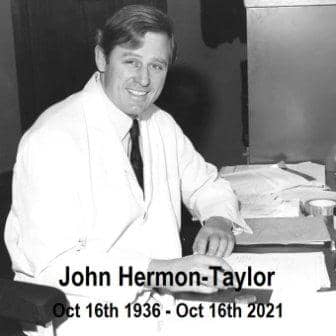
I was saddened to hear the news of the passing of John Hermon-Taylor.
In New Zealand we have an expression when men like JHT depart from us.
In Maori the saying is “Kua hinga te tōtara o Te Waonui a Tāne.” Very roughly translated it says.
“In the forest of Tāne a great Totara has fallen.” A Totara is a tree which is of great value. The proverb is used when a person of influence and mana passes on. It most certainly applies to JHT.
London is literally half a world away from New Zealand, and I only met JHT in person once. I visited him in his laboratory in London one afternoon when the opportunity presented itself. In person he was a warm, charismatic man able to engage in a relaxed manner with and easily put this slightly nervous visitor at ease. He was comfortable in the laboratory environment, and we discussed our respective interests. He explained to me his work on diagnostic testing and I explained what we were finding in my laboratory in New Zealand. It was a long and extremely enjoyable dialogue.
JHT was a great leader in the field of Crohn’s research, and I want to point to three papers which had a deep impact on my thinking, and I believe speak to his character.
I first made the acquaintance of JHT through the pages of the British Medical Journal in 1998.
His paper described the case history of a young boy who presented with a swollen neck node which was surgically removed. Five years later the same boy presented with early Crohn’s disease. The report of the case history included the important finding that the samples from the patient’s neck node, when the tissue block was re-examined, were strongly positive for the presence of MAP DNA.
In that paper, JHT made several important observations. He was able to link MAP with Crohn’s disease, and he was also able to describe the use of several antibiotics to address the child’s flareup with success. The antibiotics were rifabutin and clarithromycin, both subsequently used in the classic “anti-MAP” combo. The paper also clearly linked Crohn’s disease with milk, to the extent that the patient was advised to drink only UHT milk. JHT also observed a rapid response to the antibiotic combination, and attributed this to the young age of the patient and the fact that Crohn’s disease had not caused widespread gut involvement and structuring.
The paper added greatly to the poor general understanding of MAP and Crohn’s disease, and stands in my mind as one of the most influential papers on the disease.
I recently had occasion to revisit JHT’s paper of 2000, on the causation of Crohn’s disease. The work was concerned primarily with the implications of environmental contamination with MAP. In that paper, JHT described a study where his group had demonstrated the carriage of MAP DNA in 12% of healthy controls, which he commented was a reflection of environmental contamination in an exposed population. Working with Gaurav Agrawal, we have only recently been able to demonstrate just how eerily right JHT’s predictions were. In this paper, JHT mentioned the possibility of engineering an anti-MAP vaccine.
In 2009, he wrote the paper widely referred to as the “Doomsday paper”, partly because of the predictions of the emergence of a MAP zoonosis and the downstream effects on populations.
I had not read the article for some years, and was again surprised by the predictive skills of the author.
For me, sitting in Christchurch New Zealand, the Doomsday paper outlined the next steps on the research path. Ironically the paper also mentioned my home town, Christchurch, which has the dubious distinction of having one of the highest rates of Crohn’s disease in the world. Christchurch and Winnipeg were mentioned as cities close to major rivers associated with animal use. The paper is amazingly well constructed and follows on from the observation that the rivers are likely laden with MAP, onto the next section which discusses the “convergence” of known gut pathogens almost akin to a river of microorganisms blending and exchanging genetic material. I thought that was a brilliant use of imagery. My recent rereading of the doomsday paper made me realise just what an intricate work it is.
One particular example of this is the observation that MAP could trigger neuropathy in animals, and by implication, in humans. In the present day, there is an acceptance by some that MAP may be able to trigger neurological symptoms in humans, but that paper was the first place I read of the idea.
Looking at the doomsday paper now, I see it as an important shopping list for the future, and at the same time an inventory of what was known in 2009. The paper is a not a conventional review, but is a description of what can be deduced from then current knowledge. The paper then surmises what the next steps in research should logically be.
Others will touch on JHT’s contributions in vaccine research, and the vision and tenacity required to turn an idea into reality.
My perception of his contribution to Crohn’s knowledge is more personal, and has grown out of an admiration of his willingness to share his ideas in conversation and in publications. It is the ability to share his wisdom so freely that will stay with me. Through his writings he will live on, and he will be remembered for his remarkable contributions to the understanding of autoimmune diseases for the benefit of other researchers and ultimately the patients.
Kua hinga te tōtara o Te Waonui a Tāne

